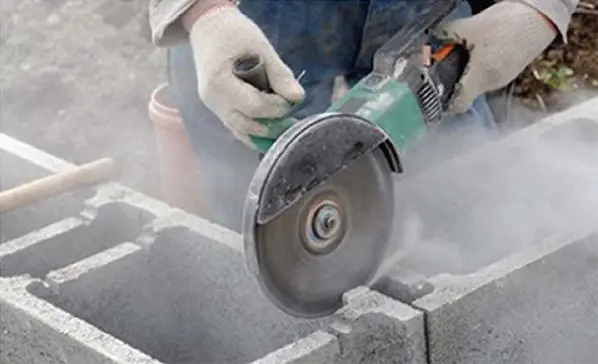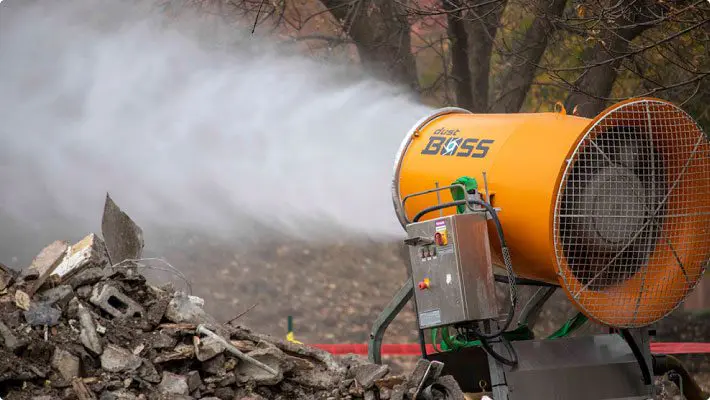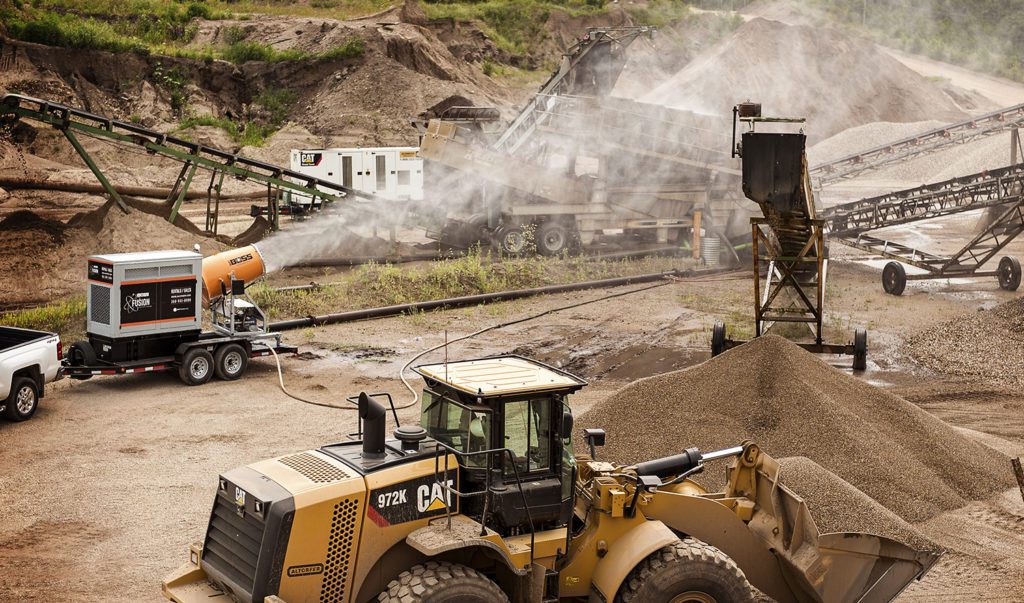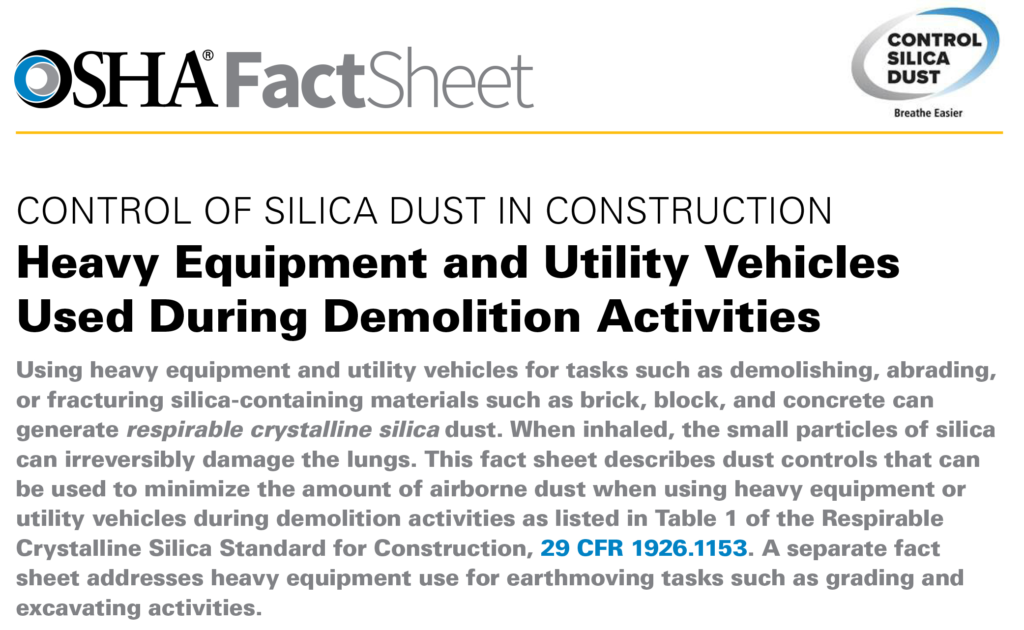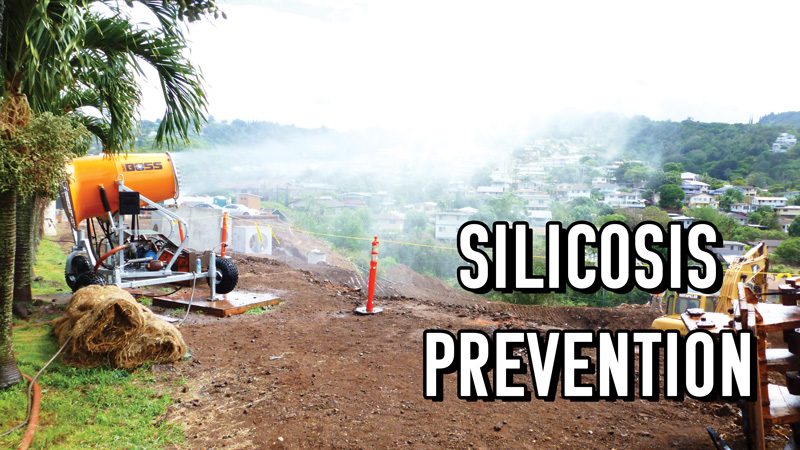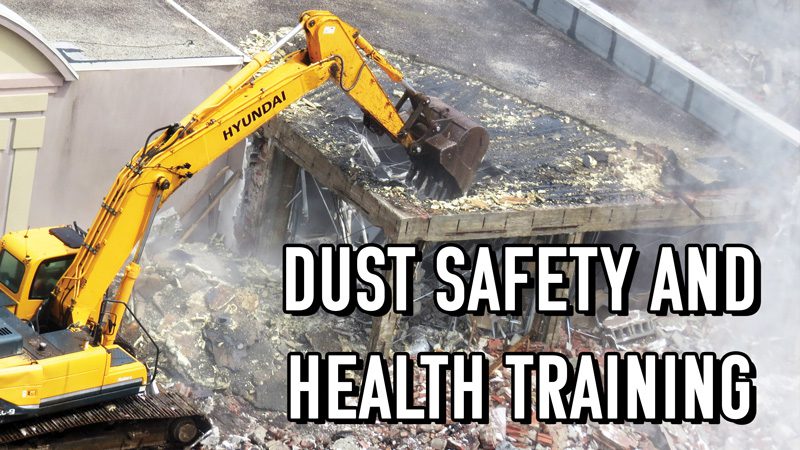d
HOW TO MEET OSHA RCS REGULATIONS
To control levels of airborne silica dust for your workers - and to comply with these new silica dust regulations - you should carefully consider these instructions from OSHA:
- Use engineering controls to limit worker exposure.
- Provide respirators when engineering controls cannot adequately limit exposure.
- Limit worker access to high-exposure areas.
- Develop a written exposure control plan.
- Offer medical exams to high exposed workers.
- Train workers on silica risks and how to limit exposures.
You should also consider employing a combination of the following approaches:
- Workflows
- Ventilation
- Respirators
- Surfactants
- Sprayers
- Atomized Mist

WORKFLOWS
- Identify processes on your site that are causing dust.
- Limit those activities to prescheduled time slots in a shift.
- Utilize proper safety equipment and dust control measures for shorter periods.
This approach is only possible for indoor operations that are not subject to wind or unpredictable environmental conditions.
HVAC VENTILATION
For HVAC, air cleaners and dust collectors to be effective, dust-causing operations must be contained in an enclosed area that is only occupied by workers wearing protective gear.
Most commonly, air cleaners and dust bags are attached to enclosed conveyor transfer chutes or vessels.
Routine monitoring, changing and clearing of filters or dust bags is an important component within this solution, which may require regularly scheduled downtime.
RESPIRATORS
While highly effective with a relatively low per-unit cost, respirators can be cumbersome for long-term use and may be removed by workers at ill-advised times.
The unit must be NIOSH (National Institute for Occupational Safety and Health) approved for the specific environment.
Filters must be checked and changed regularly, and OSHA requires employees to be trained in the proper operation and maintenance of the equipment. [1]
An improper fit can render them less effective, so the agency also requires periodic fit checks.
SURFACTANTS
This type of chemical additive is distributed in water by industrial sprayer or atomized misting system, and is particularly helpful for the suppression of dust emitted by naturally hydrophobic materials such as coal.
Materials are hydrophobic when the interaction between the water molecule and the material is negative, causing the water molecules to bond to themselves rather than the materials. [2]
This creates beaded droplets that roll off the surface rather than wetting it, like a water-resistant jacket.
Surfactants promote ionic bonds that spread the droplet across the material, allowing hydrophobic particles to cling and cake.
SPRAYERS
Commonly found in the form of misting hoses, water cannons, sprinkler systems and water trucks, this method distributes water on the surface of a material to seal in dust at mines, material transfer points, on storage piles and in open transport vehicles.
In some cases, one or more workers are required to operate or reposition the equipment.
Due to droplet sizes of 200µm to 1000µm, sprayers have been found to be largely ineffective in controlling airborne fugitive dust emissions.
ATOMIZED MIST
A fine engineered mist is distributed using a powerful fan-driven cannon design or strategically placed misting bar/ring.
Nucleating nozzles fracture pressurized water into millions of tiny droplets between 50µm and 200µm in size, preferably applied at the point of emission.
The tiny droplets raise the humidity of the target area, floating on atmospheric air currents with dust, capturing particles and dragging them to the ground.
Settling droplets provide surface suppression evenly across material using less water, drastically reducing the volume of runoff and lowering the chance of pooling.
Sources
[1] Staff, “Respirator Protection”, Occupational Safety and Health Administration, Department of Labor. Washington DC. March 6, 2017. https://www. osha.gov/Publications/OSHA3079/osha3079.html
[2] Van Oss, C. J., Geise, R. F., “The Hydrophilicity And Hydrophobicity Of Clay Minerals”, Clays and Clay Minerals, Vol. 43, No. 4, 474-477, 1995. http://www.clays.org/journal/archive/volume%2043/43-4-474.pdf


